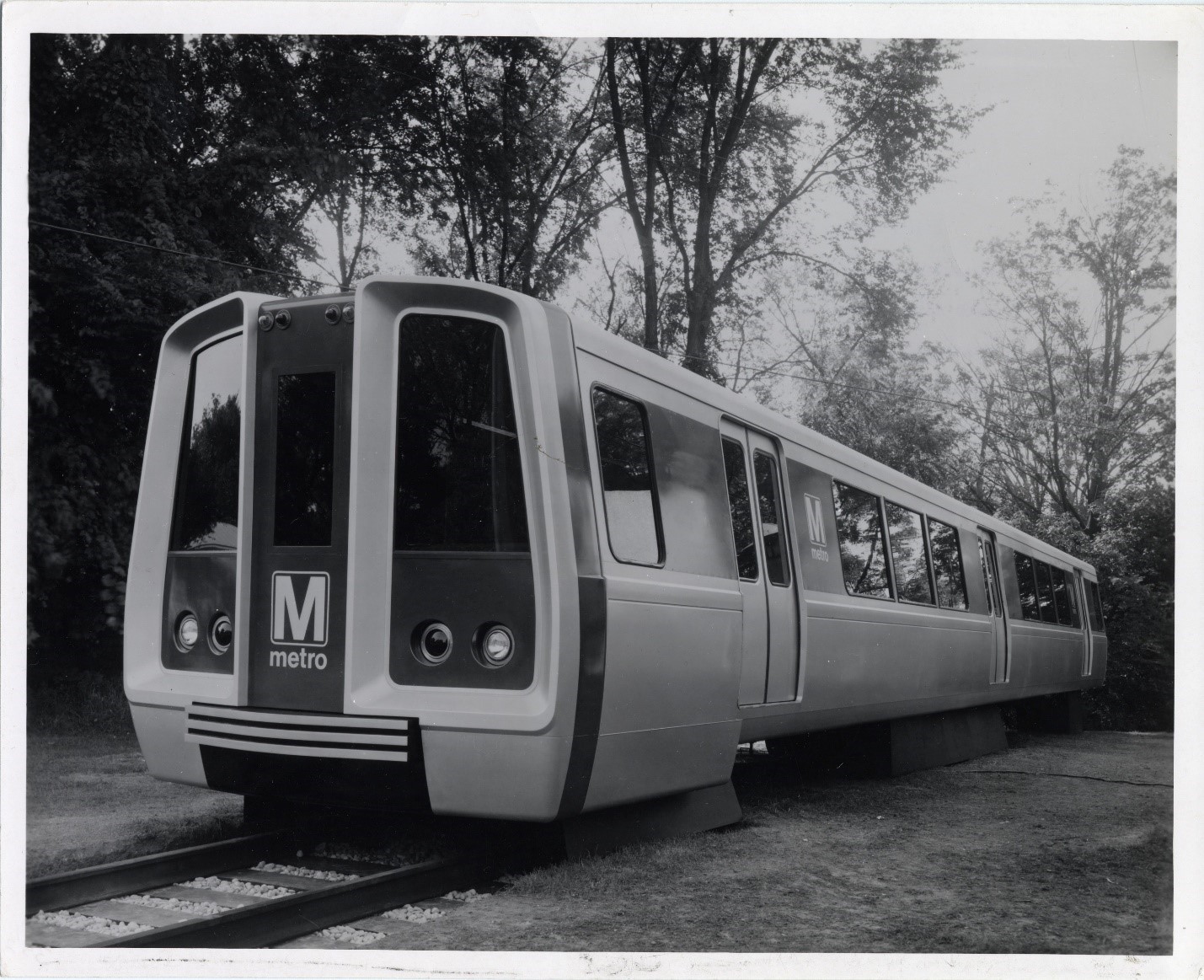Interview with Roye Lowry
The arrival of the Metrorail in 1977 forever changed the landscape of Arlington, shaping the region for decades to come.

Oral histories are used to understand historical events, actors, and movements from the point of view of real people’s personal experiences.
In 2010, Arlington County released the documentary, “Arlington County’s Smart Growth Journey." It focused on the development of Arlington via the Metro system and featured interviews with people involved in this historic growth period. In this interview, narrator Roye Lowry details the trials and tribulations of the landmark Metro project, some of which are featured in the Smart Growth documentary.
Lowry served on Arlington’s County Board from 1962-1965. During that time he helped lay the groundwork for the construction of the Northern Virginia Metro system and related County development.
Metrorail car, 1969, WMATA photo.
Narrator: Roye Lowry
Interviewer: Mary Curtius
Date: December 5, 2007
From the documentary:
[7:35]: The schools were a major interest. But also, the development of Arlington became of interest because we were just building apartments and gas stations almost everywhere.
[14:57]: The first place was Rosslyn. We got to give a lot of credit to the man who was then the head of our highway division, Stoneburner, Mr. Stoneburner because they wanted to run 66 right flat down what would have then been the middle of Rosslyn, which would distort any possibility of development.
[13:27]: When they began to talk Metro plans, we were for it because that is the only way we’re going to escape having highways.
[29:17]: The notion was we tried to unite public purpose and private profit. If you can successfully do that in anything you’ve got a winner.
From the oral history interview:
On the Metrorail coming to Arlington:
Roye Lowry: Arlington was just in the way. People who lived out in the hinterlands, no matter where, they just wanted to get through here to get to Washington. We lived here. We were in the way and we weren’t going to move. We had this notion of preserving a community of approximately 200-210,000 people. That was the notion and it turned out to be pretty good.
Mary Curtius: What was the population back in ‘61, ‘62? Was it anywhere near 200,000?
RL: No, it had to be 160,000 maybe, something like that.
Rosslyn Station construction sign with crane in background.
On development in Arlington:
MC: Do you think you understood at the time. I understand the preservation motive, you wanted to save Arlington from being carved up.
RL: But we’re redeveloping at the same time.
MC: Did you think it would help redevelopment, that Metro would help redevelopment?
RL: We were pretty sure it would. Metro is going to run through Arlington. There are going to be some stations. It’s not just going to run through Arlington. It took much longer than was anticipated to get it going. I remember when there was some kind of ceremony, dedication ceremony or something in Clarendon when the Orange Line. It was a big celebration. I was standing there in the crowd and I saying it’s seven years behind schedule right now when it gets there.
Roye Lowry conducted this interview as part of Arlington County’s “Smart Growth” documentation project, and the full interview can be accessed at the Center for Local History – VA 975.5295 A7243oh series 8, no. 10. Fifteen additional interviews in this series are also available at the Center for Local History, and the full “Arlington County Smart Growth Journey” documentary is available online.
The goal of the Arlington Voices project is to showcase the Center for Local History’s oral history collection in a publicly accessible and shareable way.
The Arlington Public Library began collecting oral histories of long-time residents in the 1970s, and since then the scope of the collection has expanded to capture the diverse voices of Arlington’s community. In 2016, staff members and volunteers recorded many additional hours of interviews, building the collection to 575 catalogued oral histories.
To browse our list of narrators indexed by interview subject, check out our community archive. To read a full transcript of an interview, visit the Center for Local History located at Central Library.



